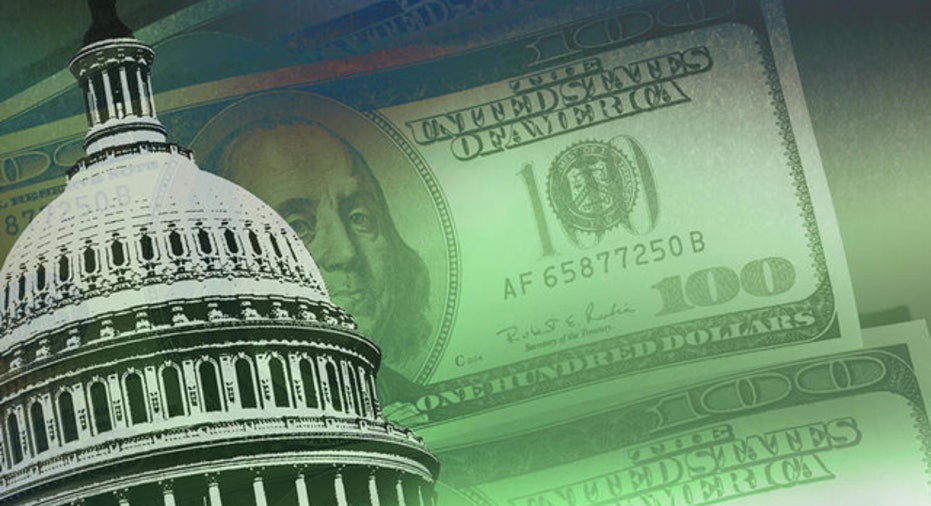Less Than a 'Capitol' Idea

If part of your income comes from investments, New Year’s Eve could usher in something much more significant than the start of 2011: a lower standard of living. Like Cinderella’s coach, when the clock strikes midnight, the tax rates we’ve been paying on dividends and capital gains for the past seven years vanish. In their place will be…. Well, we really don’t know.
Welcome to Congressional gridlock and party politics.
The story begins in 2003. Americans were still shell-shocked from the September 11, 2001 terrorist attacks. In an effort to grease the economic engine, the Republican majority in Congress passed the Jobs and Growth Tax Relief Reconciliation Act. The main goals of “JGTRRA:” to encourage spending and investing by businesses and individuals and to boost job creation.
The incentive for individuals? A 25% reduction in the top capital gains tax rate - from 20% to 15%. Those in the two lowest income tax brackets (10% & 15%) would see their rate cut in half- from 10% to 5%. Furthermore, the Act provided that in 2008, the long-term capital gains tax rate for lower-income taxpayers would disappear. That is, these folks would keep every penny they made from selling such things as stocks, bonds, mutual funds, and real estate (including a personal residence) - provided they owned the asset for at least one year.
What’s more, those who chose to invest money - as opposed to parking it in a bank account - would also get a tax break: dividends on “qualified” stocks would no longer be taxed at the same rate as ordinary income - potentially as high as 35%. Instead, they would be subject to the exact same tax schedule as long-term capital gains. This meant that in 2008, individuals in the two lowest brackets would pay zero tax on their dividends.
Another tax law enacted in 2006 extended the lower rates (0-15%) on capital gains and dividends through this year. However, unless Congress can agree on a “fix” before December 31st, these and other so-called “Bush” tax cuts - including lower rates on ordinary income - will expire. At that point, the tax rates in effect prior to their passage will again become law. Retirees who rely on investment income could be in for a shock. Taxpayers in the 10% and 15% brackets aren’t paying any tax on dividends and long-term capital gains right now. If their rate goes back up to 10% “that’s a significant hike,” says CPA Melissa Labant, a tax expert at the American Institute of Certified Public Accountants.
President Obama and congressional Democrats have proposed increasing dividend and capital taxes only for "The Rich," defined as those in the top two income tax brackets. The rate for these individuals would increase to 20%. (To see what income tax rates would look like, under these two scenarios please see last week’s column.) However, with mid-term elections coming up, it’s anyone’s guess whether Congress will have the guts or the votes to enact any legislation raising taxes. The problem is that tax planning is impossible when the rules are in limbo.
The uncertainty does not just pertain to income, capital gains, and dividend tax rates. “There are so many moving parts,” says Labant. The status of the Alternative Minimum Tax is also up-in-the-air. As she points out, “The AMT is a big factor when deciding whether to accelerate or defer income.” In addition, she warns that, for higher-income taxpayers, “itemized deductions are going to vanish [in 2011]. Instead of a 100% deduction, you’ll get a maximum of 20%.”
For Gerald Prante, chief economist with the non-partisan Tax Foundation, “it’s an issue of double-taxation. Dividends are already taxed at the corporate level. Then, when they’re distributed, they’re taxed at the individual rate… We’re raising the most tax-advantaged form” for companies to raise capital.
In addition, he says the problem is being compounded by increasing the tax on capital gains. “This raises the cost of capital over the long-term and lowers living standards.” Companies looking to borrow money have to pay a higher interest rate to compensate lenders - including individuals - for their reduced return. As a result, businesses have less money to invest in new plant and equipment. According to Prante, over the long term “workers become less productive. It lowers wages.”
To top it off, in 2013 when the Medicare surtax kicks in, upper-income individuals will see the potential tax they’ll pay on dividends and capital gains jump 19% (from 20% to 23.8%). This will make dividend-paying stocks even less attractive as an investments. “Dividends from corporations will decline,” predicts Prante. “Corporations are sensitive to how their shareholders are taxed. They’ll distribute profits in other ways.”
What’s an investor to do? Labant recommends you “reach out to your tax preparer in November instead of February or March. Have them do a projection,” comparing different tax scenarios to see what strategies make the most sense for your situation so you can act before the end of this year. “The costs are [minimal] compared to the potential tax savings,” she says. For instance, instead of the usual advice to accelerate deductions into the current year and postpone income into next year, higher tax rates in 2011 might call for doing the exact opposite.
Next week: The estate tax: To be, or not to be?
After the Congressional elections are over we’ll have a better sense of what tax policies might look like.
Ms. Buckner is a Retirement and Financial Planning Specialist at Franklin Templeton Investments. The views expressed in this article are only those of Ms. Buckner or the individual commentator identified therein, and are not necessarily the views of Franklin Templeton Investments, which has not reviewed, and is not responsible for, the content.
If you have a question for Gail Buckner and the Your $ Matters column, send them to: yourmoneymatters@gmail.com, along with your name and phone number.



















